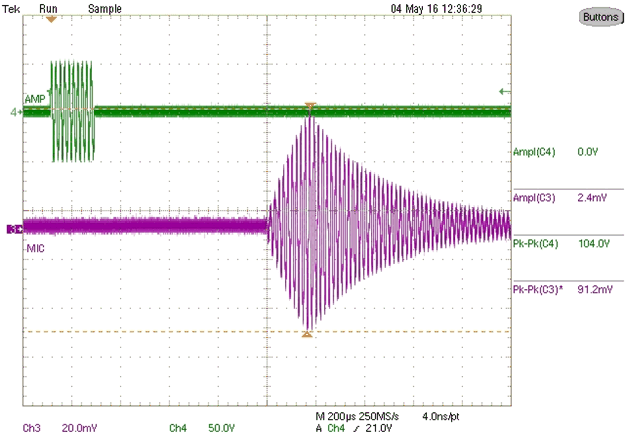SLAA732A February 2017 – April 2021 PGA460 , PGA460-Q1
6.1.1.2 External Microphone
To monitor both the emitted frequency and SPL of the transducer in amplitude, an external microphone must be used, such as the G.R.A.S. 46BF Free Field Microphone, with an oscilloscope. To convert the peak-to-peak SPL from voltage to dB, use Equation 3 and Equation 4.
Equation 3. SPL Pa = VMeasured mVRMS / 3.4 mV
Equation 4. SPL dB = 20 × log10 (SPL Pa / PO)
where
- PO is reference sound pressure of 20 µPa
In the example in Figure 6-2, the green waveform represents the driving voltage across the transducer and the purple waveform represents the ultrasonic echo captured by the external microphone at 30 cm. Both the frequency and dB equivalent can be monitored using this method.
 Figure 6-2 Sound Pressure Level as Voltage Equivalent
Figure 6-2 Sound Pressure Level as Voltage Equivalent